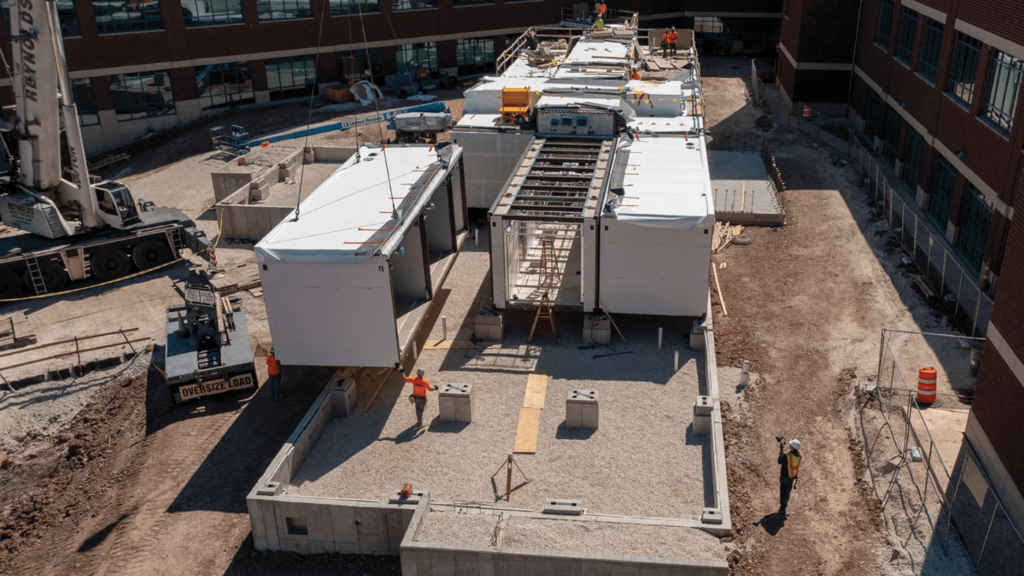The concept of modular healthcare facilities has gained traction as a promising solution to building challenges, offering time-efficient, cost-effective alternatives for expanding or creating healthcare spaces. By assembling pre-fabricated modules at factories, modular hospitals can be constructed and operational in a fraction of the time required for traditional builds. This flexibility meets the growing demand for adaptable, scalable healthcare infrastructure—an essential quality in rapidly changing medical environments.

Benefits of modular hospitals
One significant advantage of modular construction is its potential to reduce on-site work, minimizing disruption, labor needs, and costs. This process also enhances quality control since much of the construction is completed in factory settings with standardized procedures, resulting in a more predictable, precise product. Hospitals can expand capacity by adding or reconfiguring modular units as needed, supporting fluctuating patient demands and enabling swift responses to emergencies like natural disasters or health crises.
Modular healthcare facilities also prioritize sustainability. Constructed with highly controlled resource usage, these facilities are often more environmentally friendly, with waste-reduction practices and energy-efficient designs. Hospitals benefit from flexible configurations that align with changing healthcare needs while lowering long-term environmental impact.
As modular construction technology advances, so does the potential for even greater customization within healthcare facilities. Modular hospitals can be tailored to incorporate specialized units like ICUs, isolation rooms, and diagnostic labs, meeting diverse needs within a single facility. This adaptability allows hospitals to quickly reconfigure spaces for specific patient care requirements during flu season or an unexpected crisis. Moreover, modular facilities can be relocated or repurposed as needs shift, providing flexibility that can significantly extend their usefulness and value over time.
Beyond adaptability and speed, modular hospitals are a more economical choice. They minimize indirect costs like security, equipment rentals, and weather-related delays by reducing on-site construction time. Lower labor costs are another benefit, as modules are assembled with efficient workforce models in controlled settings, cutting down on-site labor demands. These savings enable healthcare providers to allocate more budget to critical areas like advanced technology or patient services, ultimately enhancing the quality of care offered within these modern facilities.
Challenges associated with modular hospitals
Despite these benefits, some challenges persist. There’s a need to overcome regulatory hurdles and align modular designs with healthcare codes and patient expectations. But as modular methods evolve, they’re showing promise in helping hospitals keep up with the demands of modern healthcare systems.
Another challenge modular hospitals face is integrating advanced medical technology within the pre-fabricated design. Many modular units need extensive customization to support specialized equipment like imaging machines, which have specific structural and electrical requirements. Additionally, certain medical technologies evolve rapidly, meaning modular facilities must be adaptable enough to accommodate these changes. Striking a balance between prefabricated structures and complex, evolving medical equipment can be a logistical hurdle, requiring collaboration among architects, engineers, and healthcare providers to ensure all components meet the hospital’s high standards.
Bottom line
Modular hospitals offer a promising alternative to traditional healthcare construction, providing efficient, scalable, and adaptable spaces to meet evolving patient needs. By reducing build time, minimizing costs, and prioritizing sustainability, these facilities stand to redefine how healthcare infrastructure adapts to challenges. Though obstacles like regulatory requirements and technology integration remain, modular hospitals could be key to a more responsive and resilient healthcare system, paving the way for faster expansions and sustainable hospital models fit for modern demands.
Want to stay updated on the latest trends in construction? Subscribe to our weekly newsletter for valuable insights into innovative approaches transforming the industry.




2 comments